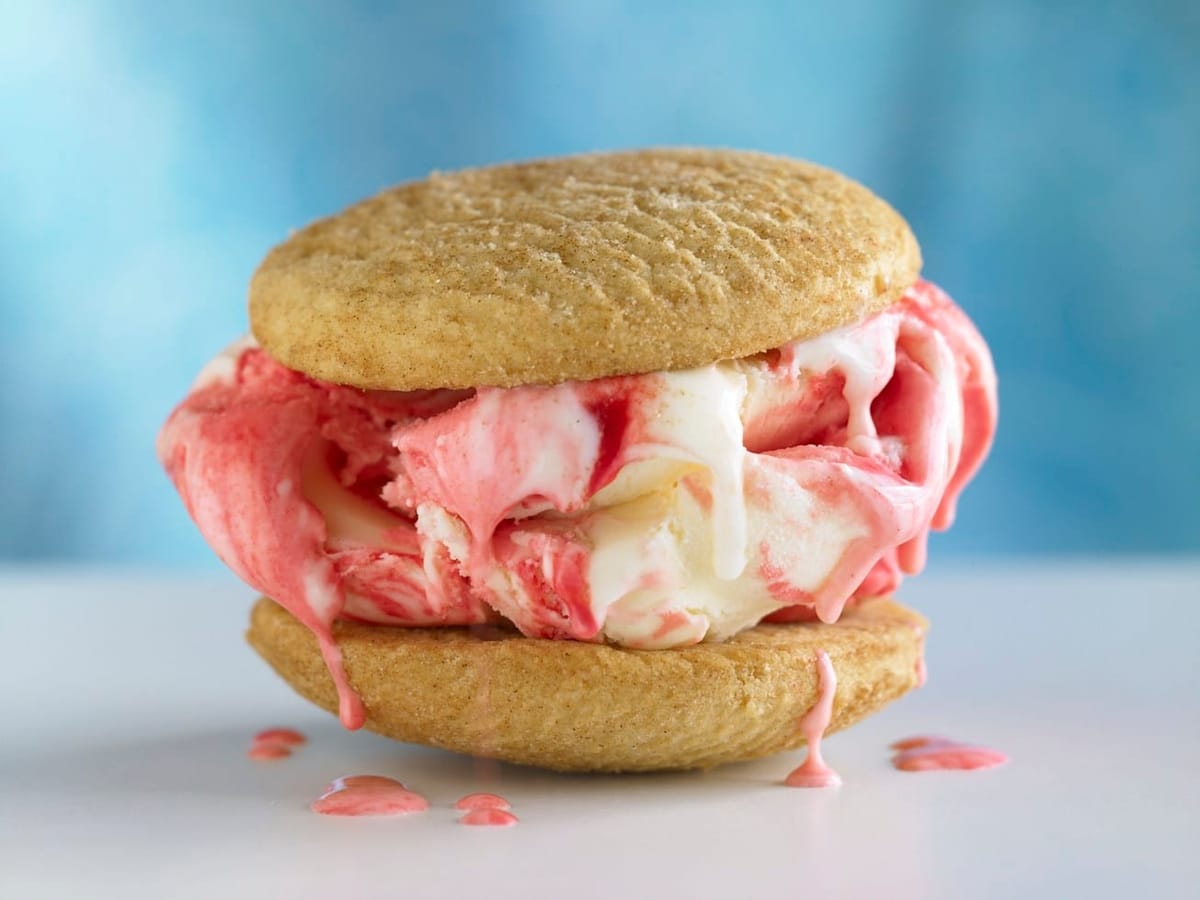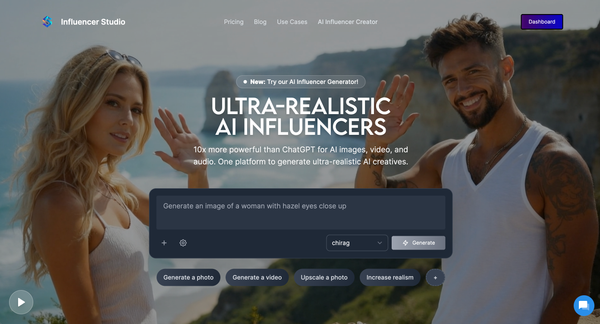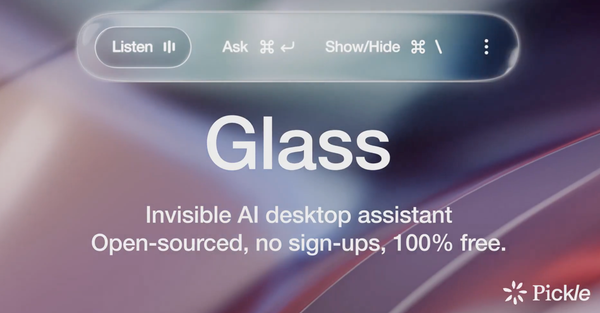How the Founder of Coolhaus Rolled the Dice On a $2,500 Truck and Turned It Into A Multi-Million Dollar Business

She set out to make everyone happy by feeding us the two things we all love. Cookies and ice cream. Now that Coolhaus is evolving into more than just ice cream shop, we got a chance to talk to this entrepreneur to hear more about her future empire.
LA weather has been scorching hot these days, breaking all sorts of crazy records we wish it wouldn’t. And with a dangerous drought handcuffing our access to water, all I can think about on a daily basis is some sweet, sweet ice cream, the delicious treat which makes these long summers somewhat fathomable. Which led me to local fav, Coolhaus, the company that specializes in ice cream sandwiches. In a sleek new office space next to their inaugural ice cream parlor on West Washington Blvd. in Culver City, California, Coolhaus entrepreneur and innovator Natasha Case (with her small army of employees) is carefully crafting her next moves to conquer the world. Having seen their trucks roaming the streets of LA day and night, you’d think Natasha was just an ice cream trafficker, selling mouth-watering treats to the city’s dairy and sugar addicts. But after listening to her speak about her business, and learning about the variety of products in their portfolio, the future dessert baron is really building a brand of all things edible and drinkable, whose ceiling can only be limited by her imagination. It’s not a hard sell. Soft chewy cookies combined with outrageous ice cream flavors like chicken and waffles, the Netflix (White Cheddar Popcorn-infused base, Doritos) and Peking Duck (Peking duck skin and fortune cookie crumble in a Chinese five spice ice cream with plum sauce swirl), Coolhaus makes more than one sick dessert treat that makes you realize there’s more to life than just vanilla and chocolate.
Download the NOTES + bonus lessons learned!
We spent a lot of time to create a PDF for you that outlines the business lessons you can learn from Coolhaus, and we also gave you a little bonus content inside this PDF to help you grow your business. Download it below:
Idea to Business
Natasha and her biz partner turned wife, Freya Estreller, started churning out innovative ice cream flavors to stand out from the rest of the crowd. With a background in design and architecture, she combined the two to create a concept of food and architecture, Farchitecture.
Certainly a different take that stands out from her competitors. With no prior experience in the food industry, the two young women tested their unique flavors at small events with family and friends.
“We did dinner parties and served ice cream sandwiches, asking them to do a survey, giving us anonymous feedback, which was very valuable. People are afraid that people will steal ideas but it’s all about the execution.”
It confirmed that they had a product. The rest, they would learn on the fly.
Entrepreneurs usually get into a business because of a passion. For Natasha, it was simple.
“Ice cream has nostalgia and comfort, mass appeal and it’s a great canvas for experimenting. So much you can do with it. Pushing the envelope with unique flavors and twists on things. Less experimenting going on in the industry, so I saw an opportunity.”
But why ice cream sandwiches specifically?
“The cookie brings in a whole other flavor component, set of tastes and experiences. All you need are your hands and you can pick it up and eat it anywhere. Pretty awesome,” she exclaims.
How did they manufacture their ice cream?
Food manufacturing is a beast, especially if you need to mass produce for the ever-growing foodie population. You’ll need to follow certain regulations, such as manufacturing in licensed kitchens, fulfilling more than a few permit requirements, and making sure nothing gets contaminated.
After going through the gauntlet with a few different co-packers in LA, some of whom asked for R&D fees, Natasha found the right company who gave them insight into the business as well as guiding them early on.
“They were guardian angels for our early days of production. You want to find someone who will take you in and take a chance on you in the beginning and won’t outgrow in a year or two. Our current co-packers are able to grow with us as we grow.”
Name of the co-packer? Couldn’t pry it out of her. TOP SECRET.
How did Coolhaus come up with their pricing?
Long gone are the days of dollar cones with a scoop or two. Coolhaus’ sammies can range from $3 to $5 per, which Natasha attributes to the quality of her ingredients.
“All our products are natural and a lot of them have organic ingredients, but not certified organic. Similarly, non-GMO but not certified that way yet, which we’ll do in the next year or two. You get what you pay for. Two amazing incredible cookies and a delicious unique scoop of ice cream for the average of $5 bucks is a steal. But that’s why it costs a little more. We make it the best we can without making it what people might perceive as unaffordable.”
Not cheap, but as she states, you get what you pay for.
Rise to Fame
gambler: a person who takes the risk in the hope of gaining an advantage or a benefit.
Natasha, like most entrepreneurs, is a gambler who bet on herself to succeed. To launch, she challenged the biggest battlefield she could tackle by applying to and getting accepted into Coachella, the three-day music affair in Indio, CA that attracted over 150K sweaty, food and music starved riff-raffs in 2009.
But, what was the cost to sell at Coachella?
Coolhaus had to pay “a deposit that goes towards a percentage of sales, plus about $3000 worth of inventory, and a few other odds and ends of supplies.” A total under $10K, which includes the vehicle.
Let’s talk about this vehicle.
She used her credit card to buy a dilapidated postal truck for $2500, a calculated risk that’s proven to be one of her best investments.
Nervous about their food truck traveling the 200 miles roundtrip from LA to Indio, this budding entrepreneur used her AAA platinum membership to get a free tow all the way to Coachella and back! Genius.
It’s this kind of savvy street smarts and ingenuity that turns regular entrepreneurs into millionaires.
And they slayed that dragon. By the time they left the venue, Freya was getting so many emails from their Instagram account, she thought her phone had a virus. No, girl! That just meant Coolhaus was going viral!
You have to be at the right place at the right time. Cold ice cream sandwiches served to sweaty, music loving kids at the festival was the perfect recipe.
[et_bloom_inline optin_id=”optin_9″]
Finding Green
Coolhaus banked $150k their first year in business. Remember, they started out with under $10k.
Realizing financial success and early profitability, they decided to raise money to further grow the burgeoning business. Once again, through friends and family, they were lucky to get a five-figure investment, which is a lot for a new upstart looking to maintain operations.
Another round was achieved through Bobby Margolis, a friend of the family who became their mentor coach / angel investor.
Bobby was famous for turning around the Cherokee clothing line into a licensing company and through him, Coolhaus raised a million dollars, cash that helped them get into Whole Foods while building up their first brick and mortar shop.
How did social media drastically increase their brand awareness?
Instagram proved to Coolhaus that they didn’t need a huge marketing budget to gain traction.
“Social media was a huge microphone for us. It was free and new and exciting for people.”
After parlaying Instagram into further revenue and fame, which makes sense since food is such a visual medium, they focused on Facebook, LinkedIn and Pinterest.
Natasha explains how each contribute to their business:
“Pinterest is very big for sales, not in the ‘buy’ button way, but because we put a lot of our best brand activations and partnerships on it. Examples of weddings we catered, showing off our portfolio of what we can do with our products on various boards and using them to reach out to clients and leads.”
“LinkedIn is great for getting leads, linking who we want to connect with in the business and who we want to partner up with.”
“Facebook is good for an older crowd and more localized venues, store to store type of promotion.”
How did she use connections to generate publicity?
Every entrepreneur will tell you that you’ve got to get out there and expand your network. That’s how you find investors, get feedback on your product and spread word of mouth. Natasha’s no different in that respect, seizing on her own personal connections to generate publicity.
She relays a funny anecdote.
“I emailed a friend who worked for a blog and he did a post about us. Not even a nice post. It was like, “We don’t get it. Architecture and ice cream, but I guess it’s cool and it happened at Coachella.”
I tapped my network to help it go more viral. You reach out to everyone you know and let them know what’s going on. We didn’t hire a publicist. We just hit the pavement. It was just the PR, getting it out to critical mass.”
Without doubt, another integral part of their marketing is the truck, which rumbles its way through the streets of LA, NYC, Austin and Dallas.
As part of their PR and grassroots brand building, their 11 trucks and 1 cart will continue to provide great advertising, acting as moving billboards while generating revenue at the same time.

Are the trucks profitable? Yeah. Netting 10% a year for the company.
“The truck is a great way to launch because you can go to so many different neighborhoods and be a part of so many different demographics. The truck is its own microphone for the brand,” states Natasha.
Future Growth
Led by Dan Fishman (Wholesale President) and Jarett Margolis (Sales Manager), Coolhaus is quickly penetrating markets across the country, broadening their business from ice cream trucks to wholesalers.
“The wholesale distribution is going to be five million of our business this year and is the most scalable and could be 50 million. So that is definitely where the big picture money is.”
How will they expand?
Besides selling pre-packaged products to over 1500 retailers including Whole Foods, Sprouts, Krogers and Safeway, they’re also making inroads by collaborating with non-traditional businesses, Urban Outfitters, Clover Pressed Juice, colleges and hotels such as the Viceroy in Santa Monica and Trump SOHO in NYC.
Natasha is also looking to break into the big box retailers like Walmart, who she says is “picking up cooler, edgier brands” and possibly Costco.
“We could go in a box retailer like Walmart that needs more female owned brands. They’re also the biggest retailer of natural and organic in the world.”
How do you keep your customers loyal?
All customers are fickle and when they tire of a color, a brand or a flavor, they look elsewhere to find something new.
Which is why Natasha plays around with convention to keep them coming back. It also helps build the brand.
“Product innovation is what I do. A client inspires me, I notice trends and figure out what’s next and where it’s going. Eating out and figuring out what is savory, how it can be reworked into an ice cream concept.”
But creating new flavors isn’t all that easy and you’re bound to get it wrong, as she tells us.
“There’s always one rotten egg when I do a testing. I thought a Thai inspired peanut butter base with Sriracha and crushed pickles would be good and it was gross.
Also, the Waldorf salad ice cream failed because you don’t want to use an aged cheese that stinks.”
Product innovation doesn’t just end with new ice cream and cookie flavors. She expands the brand by offering up other items.
“We can keep launching new products, but not just in the freezer space. Eventually, we can sell cookies on their own, and I have candy bars in development. Lots of different projects. Great way to grow a brand and a brand that lasts.”
What about their competition?
There are plenty of established ice cream brands and dessert options currently in the marketplace and plenty more that will try to follow in Coolhaus’ footsteps.
“I think our brand stands alone in so many ways. Architecture and design, the unique positioning of the brand, the crazy flavors, the authenticity, the quality and know how. I never worry about competition in that way.
What happens when there’s more than one ice cream truck at an event?
“If it’s a small event, I don’t want ten ice cream trucks there, but if there is another dessert truck, then it’ll attract more people who’ll want to try us. If people only buy you because you’re the only option anywhere, then you’re not good enough to win their vote.”
Current State of Coolhaus
No more plans to build any more stand alone shops. They’re solely focused on the wholesale business, catering and events, and expanding their product lines.
As an entrepreneur, Natasha tells us what she’s learned so far.
“I would say you learn a lot about yourself and how you operate under pressure. I learned so much about the power of being yourself and not being afraid of being to be yourself and how that resonates with people and how it brings that authenticity that everyone looks for. When you get an opportunity to make your voice heard, you realize the more you stick to your instincts and just put it all out there, people do really connect with that.”
As for the future, Natasha continues with Coolhaus without her partner/wife, Freya, who started Ludlow’s Cocktail Company, selling pre-packaged alcoholic jelly shots.
It’s a basic theme that entrepreneurs are always looking to start new projects.
Besides publishing the “Coolhaus Ice Cream Book,” Natasha is looking to invest in other businesses created by women, “shedding some light on our experience and thoughts to help other people grow their brands as we have with ours.”
And her advice for entrepreneurs?
“Be yourself which is one of the hardest things to do.”
What did that initial $2500 investment in a postal truck turn into today?
A business that took in $8 million in sales this year. And it keeps growing. Why? Because she took an idea, tested it, took it to market and continues to revamp it to keep the world interested in her products.
Lots of people have ideas. What separates Natasha and other successful entrepreneurs is the ability to act on them, creating a need where there was previously none.
Check out their website: Coolhaus
Instagram here: Coolhaus Instagram




